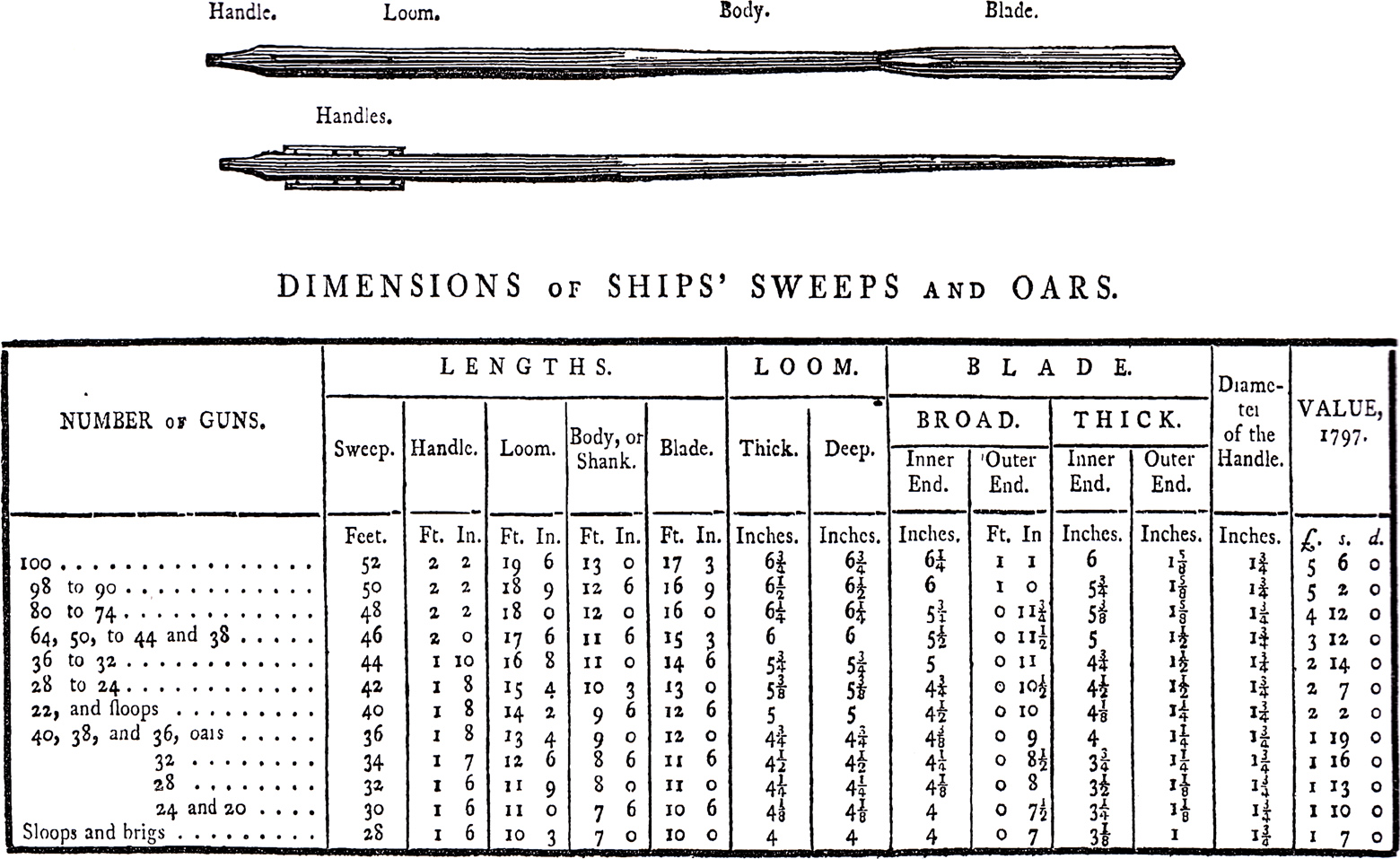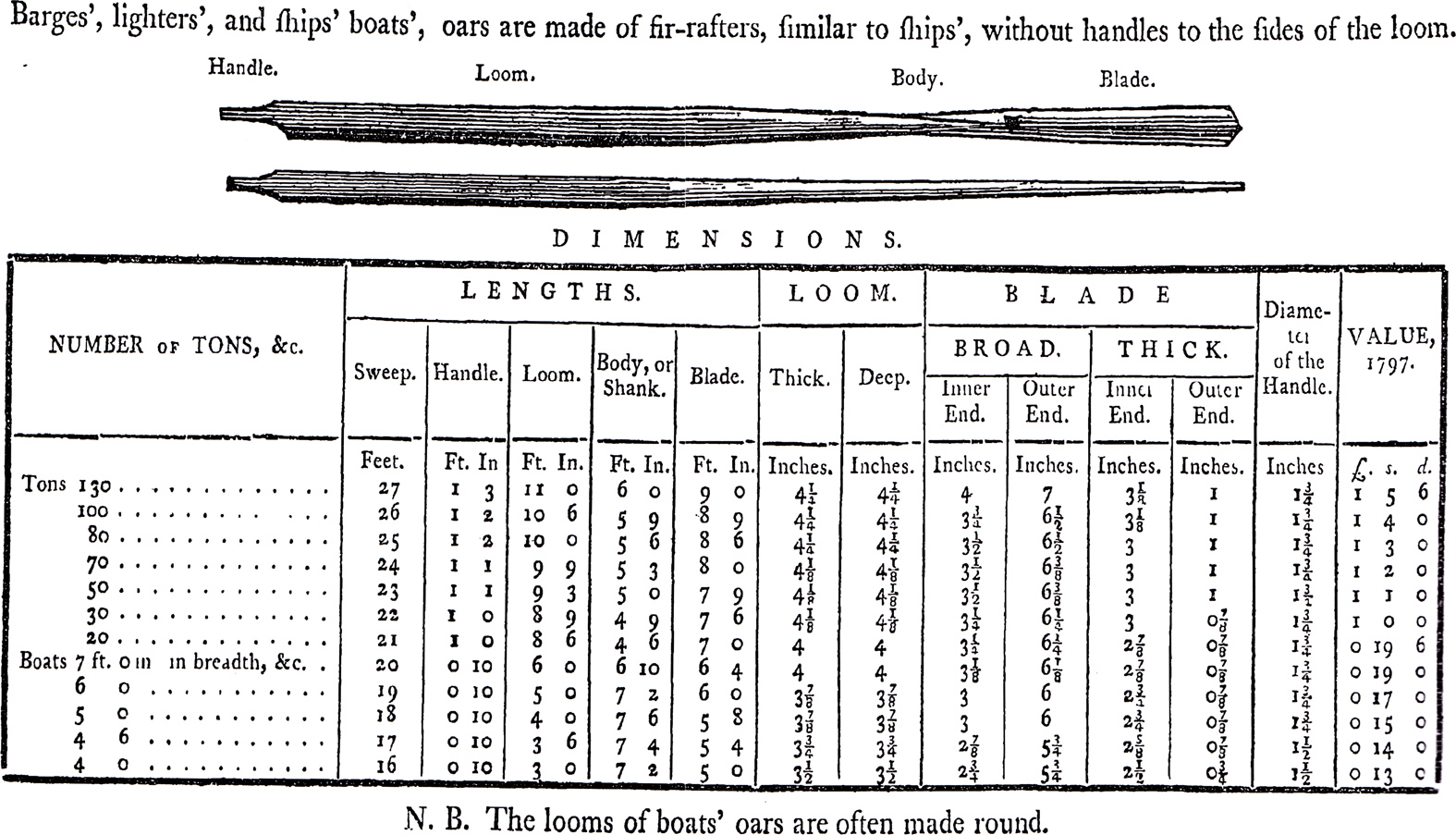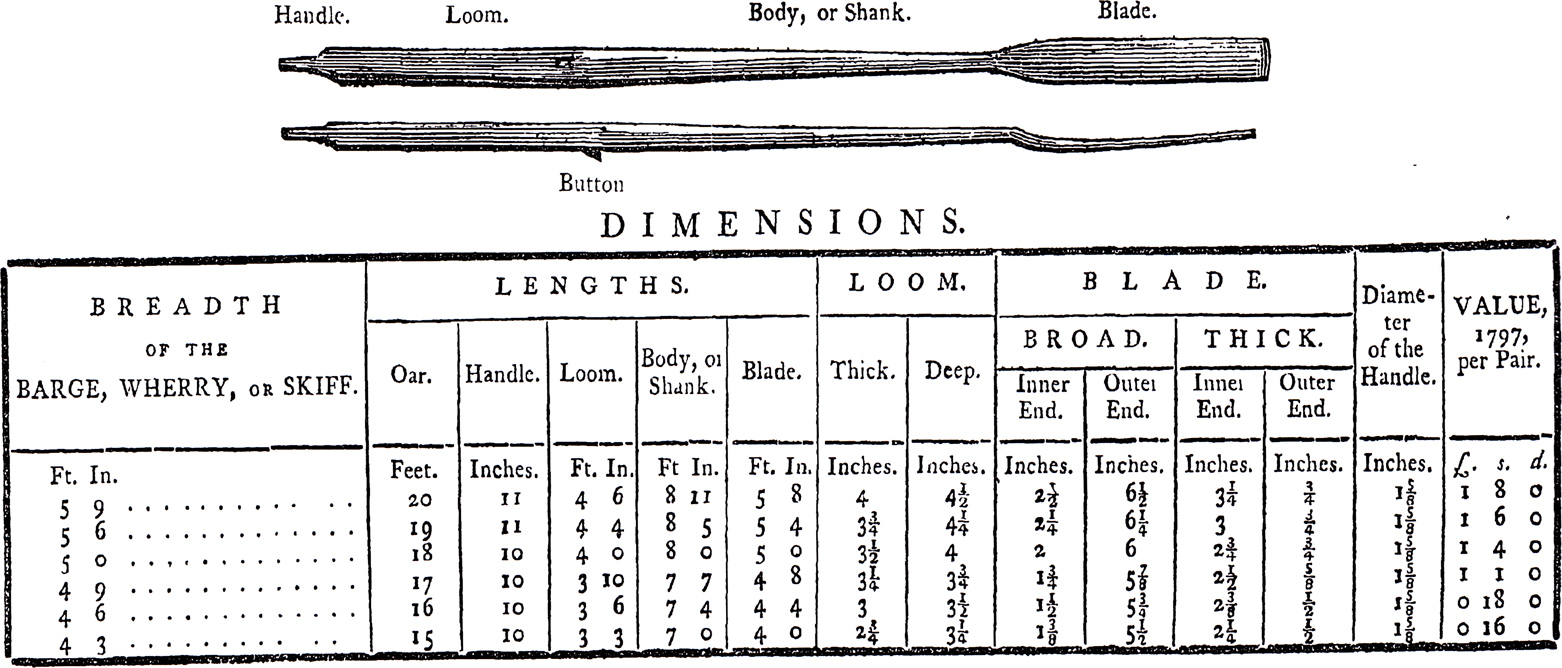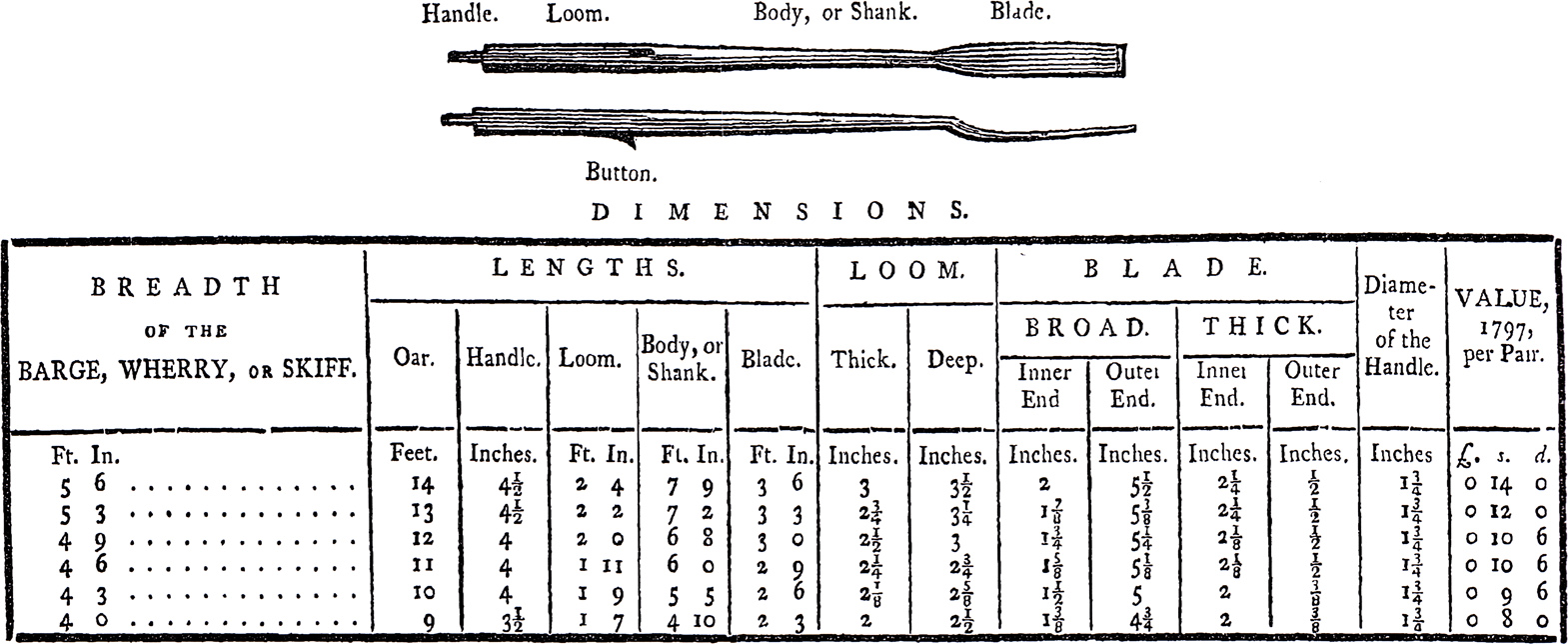I obtained a reprint of The Art of Making Masts, Yard, Gaffs, Boom, Blocks, and Oars by David Steel, from 1797.
This is an Gale ECCO reprint. That is, an original copy in the British National Library was photographed on to microfilm. The microfilm was later digitized. That digital copy has been printed. The print quality of spotty — some things are hard to read, this volume appears to be missing many of the plates related to mask making, and some plates are very eccentrically split between multiple pages. Despite this, it is better than not having a copy.
I reproduce the section on oar making below:
Oar-Making
The different parts of oars are described by the engraved figures, and their dimensions by the tables.
Ships’ sweeps and oars are made of hand-masts, or rafters, suited to the size and length, as per table. They should be chosen straight-grained, free from large knots, shakes, or rind-galls. They are first sawed, or jambed in a snatch-block, and hewed nearly to their size; then raised on horses, and completed by the drawing-knife, spoke-shave, or plane. Open handles are nailed to the sides of the loom in the direction of the flat of the blade, made of oak, about one inch and three-quarters deep, and two inches and one-quarter thick, hollowed to admit the hand easy between that and the loom: the length of the handle is one-third the length of the loom.
Barges’, lighters’ and ships’ boats’, oars are made of fir-rafters, similar to ships’, without handles to the sides of the loom.
N.B. The looms of boats’ oars are often made round.
Oars and sculls for barges, wherries, and skiffs, are made of ash (and sometimes of fir) rafters, which should be chosen tough, straight-grained, without shakes or large knots. The rough wood is taken off with an axe, and finished in a neat manner on horses by drawing-knives, spoke-shaves, and planes. A leather button is nailed on the foreside, about two inches from the loom, and that edge rounded, to work easily in the rowlock: the lower end of the blade is strapped round with tin to prevent its splitting.
Sculls for wherries, skiffs, &c. for choice and make are similar to wherries’ oars.
N.B. Oars or sculls made of fir exceed the dimensions in the above tables one-eighth of an inch. The price of fir oars is seven shillings less than ash oars, and fir sculls three shillings and sixpence less than ash sculls.



